< (Page 4 of 4)
This is a 4-part lesson on How To Pick The Best Mobile Broadband Provider.
Previously we covered how to pick a mobile broadband plan, how to pick a provider based on mobile broadband speed and how to find the best mobile broadband coverage. In this section, we cover finding the best mobile broadband device for your needs.
Finding the best broadband device is like buying a new or used car. A bunch of questions pop up:
1. How much does it cost upfront?
2. How much will it cost each month?
3. Is it sexy enough for me?
4. Will I look like a dufus to my friends and family with it?
5. Is it big (or small enough) for me?
6. Will it get the job done? (check email, stream YouTube or Pandora, download Netflix, host gaming, share the internet with a friend or two)
It’s obvious you’ve already decided that mobile broadband has some sort of place in your life. Otherwise you wouldn’t be reading this.
I don’t need to tell you how it could help you:
1. Boost your productivity because you can work anywhere and anytime.
2. Save your butt when you get stranded on the road.
3. Never have a dull moment with streaming music or video a few clicks away.
4. Knowing that you can connect anytime (gives you peace of mind).
5. Save you money by running VoIP apps like Google Voice or Skype.
Rather, the sort of questions that need to be answered run along the lines of:
1. What Are The Differences Between Broadband Devices?
2. How To Pick The Best Broadband Device?
3. Where To Get Broadband Devices for Pennies on the Dollar?
Navigating the sea of mobile broadband can get pretty choppy, but it’s easier if you’ve got a crew. That’s why we’re here. First up:
What Are The Differences Between Broadband Devices?
There are 3 kinds of mobile broadband devices. Pictured from top to bottom they are personal hotspots, broadband cards and mobile broadband netbooks.
Most broadband devices fall into one of 3 categories:
1. Broadband Cards (or AirCards)
2. Personal Hotspots (e.g. Novatel MiFi 2200)
3. Mobile Broadband Netbooks
Each type of broadband device has its own ups and downs. Here’s what you need to know:
Broadband Cards (or AirCards)
There are 3 types of broadband cards: (Pictured from left to right) PC Cards, ExpressCards and USB Cards. Each fits a particular slot on a laptop or PC
Broadband cards are external devices that you plug into your netbook, laptop or PC to give it mobile broadband access.
While they are sometimes referred to as AirCards®, not all are. Made only by Sierra Wireless, AirCards have such a large market share. As such, it’s become a household name of sorts. Its like saying pass the A-1 sauce even though the steak sauce on the table isn’t A-1.
Enough trivia for now. Here’s why broadband cards are important.
As one of the first mainstream ways to connect mobile broadband, they allow you to easily switch your connection from one device to the next. Unlike built-in mobile broadband, you don’t have to get extra creative by configuring software settings to use it on another computer. Once the software that runs it is installed, you plug in and go.
In addition to their ease of use, broadband cards sometimes come with nifty features.
Depending on the card, it may have built-in GPS, microSD slot for extra storage space, external antenna ports to boost signal reception in fringe areas.
The Important Differences Between Types of Broadband Cards
Being one of the first kinds of broadband devices, it’s only natural that they’ve undergone the most changes. Just as how you’ve got 3 types of broadband devices, there are also got 3 kinds of broadband cards:
1. USB Broadband Cards
2. ExpressCards
3. PC Broadband Cards (PCMCIA)
Each broadband card has it’s own unique form factor. Naturally, they fit different slots on your laptop. If you’ve got an older laptop, you’ll most likely use a PCMCIA (or PC Card). Newer laptops support either ExpressCards or USB cards with a notable exception. Sub-notebooks (or netbooks) may only use USB cards since they don’t have enough space for an ExpressCard slot.
USB Broadband Cards are the latest type of broadband card.
With its widespread compatibility, many manufacturers have gravitated to making mostly this kind of card.
Since practically every PC, laptop and netbook supports it regardless of operating system, it makes it less expensive (& more profitable) manufacture. In addition to this, the form factor of USB broadband cards allows makers to pack in extra microSD card features, GPS and the like.
ExpressCards are built on USB technology but have a ultra thin form factor.
With a very sleek appearance, the majority of the card is hidden away in the ‘ExpressCard’ slot within your laptop, netbook or PC. It’s biggest advantage lies in its inconspicuousness.
Having less of a broadband card sticking out works excellent for on-the-go workers whether you’re outdoors, in a truck, on a plane, in a car or whatever the case may be.
The last thing you need is a USB broadband card bumping into something, breaking the card or worse, your USB slot itself. I’ve had this happed to me. The most annoying thing about it wasn’t the cost to fix it, but rather the downtime. While you can always make more money, you can’t make more time.
Last, and definitely the least are PC Broadband Cards.
This is the dinosaur of broadband cards and devices.
While a few manufacturers still make 2-in-1 ExpressCards that ship with an adapter to fit the PC Broadband Card form, it’s become a relic due to advances in technology.
Since most laptops (and definitely not netbooks) don’t have PC Card slots due to size constraints, manufacturers have gravitated towards USB and ExpressCards. The only reason its still supported is their knowledge that some consumers still have older laptops and PCs. However, if you’re buying a new broadband device, it’s best to stay away from this if you can.
Expect ever decreasing support over the years.
There’s nothing more frustrating than being stuck with outdated technology. Think about it, can you even buy a cassette player anymore? It’s like they’re forcing you to convert it to CDs if you wanna hear your old music. Don’t be a victim of change, ride the wave instead.
Before we hop over to personal hotspots, check out this short video explaining the differences between broadband cards:
Mobile Hotspots
Personal Hotspots are the Lamborghinis, Ferraris and Porsches of broadband devices. They’re new, they’re hot, they’re slick and do a bunch of things you Honda Accord won’t do.
First up is the form factor.
At literally the size of a credit card (and not much thicker), it fits in your top pocket. Somehow they found a way to make something slicker than the iPhone. To cut a long story short, the Novatel MiFi (sold by Sprint & Verizon) brought sexy back to mobile broadband.
With features that Q provides James Bond with, the MiFi allows for a number of cool things. The biggest aha moment comes courtesy of the fact that its completely wireless.
It receives the mobile broadband connection from the towers like a cell phone but then broadcasts it via WiFi like a wireless router.
In doing so, it expands the possibilities of mobile broadband. Suddenly you no longer worry about compatibility and support for netbooks, laptops, Linux, windows or Mac. Instead, you’re figuring out how you can connect your WiFi enabled phone, printer, iTouch, camera and even digital photo frames. To stack the cool even more, you might just have GPS thrown in for good measure.
With its simplicity of use, jam-packed features, portability and silky smooth operator looks, personal hotspots like the Novatel MiFi are ushering a new age of broadband that’ll really go mainstream alongside 4G technology.
For an even more in-depth look at personal hotspots, see this unboxing video the Verizon MiFi 2200:
The only major downside to the MiFi is a 5GB restriction imposed by carriers. The Sierra Overdrive, however, does not have this limit when on a 4G connection.
Expect this to change. It’s unreasonable to offer 5GB for one device (netbooks) and then provide a device that lets you share it with up to 5 devices. Shame on you carriers.
Mobile Broadband Netbooks
Pictured above is the Dell Mini 9 Series. It’s tiny. Look at how large this guy’s fingers and cup are compared to the netbook. Quite the portable mobile broadband netbook.
Mobile broadband netbooks (or built-in mobile broadband) is like the sliced bread of broadband devices. You already knew you’d be slicing bread so why not just pre-slice it? You already knew I’d be using my laptop and getting mobile broadband so why not just stick it in there?
A number of reasons actually that we’ll cover in how you pick a broadband device. Before we get to that, let’s revisit why mobile broadband netbooks make sense:
Let’s face it, a 3G netbook can do much more than a broadband card, MiFi device or smartphone can ever do. While all the previous devices mentioned are convenient, none of them can match the functionality of a ultra-portable computer.
Mobile broadband netbooks are above all, supremely cheap, extremely portable, very convenient and light on processing power.
While they are not meant for ultra high end gaming or conducting research analysis, they are very important for the college student, businesswoman/man or knowledge worker on the go that primarily needs to write, research and communicate online"
Here’s a short 1 min video highlighting some of HP’s Mini 110 Mobile Broadband Netbook:
Now that we’ve beaten to death with an ugly stick why each kind of broadband device makes sense, how the heck do you decide on the best broadband device? It all boils down to figuring out what you’re gonna use it for.
How To Pick The Best Broadband Device
Take a look at what each kind of device excels at and what they’re crappy at. After seeing what each has to offer based on what you’re looking for in a broadband device, the decision should be clear.
Broadband Cards
What They’re Good At
– Picking up service in fringe (bad reception areas) with the help of signal booster antennas
– Switching mobile broadband service from one laptop to the next (connection travels with the device)
– Hosting a bunch of extra cool features like GPS, microSD expansion slots and such. Due to their design, manufacturers find interesting stuff to put in ’em to jazzy them up a bit.
What They’re Bad At
– Being hidden. While the MiFi can hide away in a pocket and built-in mobile broadband is…well….built in, you will see a broadband card sticking out of a netbook, laptop or PC. If you’re highly mobile (and depending on the form factor of the broadband card), this leaves the possibility for it to be damaged in an accident. However, the ExpressCard form factor highly reduces the chance of this.
– Setup can be tricky depending on your broadband card and operating system. Some may support Linux, others don’t. Some support 64 bit versions of Vista and Windows 7 while not supporting Mac OS.
The Bottom-Line:
Broadband Cards are the defacto choice for mobile broadband. With its ability to pick up in fringe areas thanks to booster antennas, its a long running staple. Naturally, it’ll still do the regular stuff and get you online in the city at high speeds. However, if you’re prone to breaking stuff, it’s better to go with a personal hotspot like the Novatel MiFi.
Mobile Hotspots
What They’re Good At
– Simple non-techy setup (press the power button, point your browser to http://192.168.1.1, set a password & go)
– Sharing mobile broadband service with up to 5 devices (it could be an Xbox 360, PlayStation 3, cell phone or computer)
– Portability & durability (the size of a credit allows for easy storage in a pocket or bag while in use)
– Creating the wow factor (your friends will ask how you’re getting online randomly. You’ll slide it out your pocket. Oooooh Aaaah)
– Compatibility. Once a device uses WiFi, it’ll work with it.
What They’re Bad At
– Keeping track of 5 GB caps (if using multiple devices, you’ll run out of internet sooner. While Verizon and Sprint, have trackers, it can be forgotten if you’re absent-minded)
– Fringe area reception (with no external antenna boosters available, you could try different positions in the house but if that doesn’t work, you’re outta luck)
The Bottom-Line
The MiFi trumps broadband cards easily whether you’re one person with just a laptop, multiple devices or even a family to share the connection with. Using familiar WiFi technology, connecting is convenient at home or on the go. So long as you don’t need fringe area connections, this is a solid bet.
Mobile Broadband Netbooks
What They’re Good At
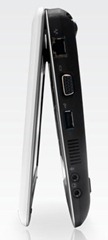 – Simple non-tech setup (software usually comes pre-installed and you hit connect)
– Simple non-tech setup (software usually comes pre-installed and you hit connect)
– Connecting one person to the net
– Upgrading for a newer laptop at a discounted price after the 2 year contract (You could cancel the service, sell the old one, and get a newer laptop with better features after 2 years. It’d be like a trade-in on an older vehicle).
– Convenience. (With the connection always with you in your laptop, there’s no extra device to carry. So long as you’ve got your laptop, you can connect. This could be especially powerful for a mobile worker that doesn’t need huge amounts of data).
– Compatibility. Since it’s built-in mobile broadband, the manufacturers naturally had to sort that issue out before selling. No worries about whether or not a broadband card is supported by your operating system.
What They’re Bad At
– Sharing your built-in mobile broadband connection with friends or family. (It’s possible but can be involving if you don’t like playing with computers much)
– Switching between carriers. Your device is essentially locked for use with one carrier much like your cell phone (this can be a problem especially if the quality of service changes over time. Think poor speeds of AT&T due to the iPhone)
The Bottom-Line
If you don’t need to share your connection, a mobile broadband netbook is a good deal. If you were gonna get mobile broadband anyway, you’ve got the option of some deep discounts on a netbook that could serve as your ‘on-the-go’ device.
Getting Mobile Broadband Devices or Service for Pennies on the Dollar
While its cool knowing why you want a mobile broadband device or service, it’s even cooler when you figure out how they work.
It’s downright practical when you decide on the best broadband device after learning how to pick a mobile broadband plan, how to pick a provider based on mobile broadband speed and how to find the best mobile broadband coverage.
However, that’s a whole lotta legwork only to pay out the ying yang when it comes time to finally by the damn thing. Or worse, have your spouse come after you because you spent $100 on a shiny new toy when you could’ve gotten it for free.
Shudder.
Does buying something through any links on help me out?
As I explain in my ethical bribe, it sure does. More so, it benefits you. Some devices even allow you to make money by purchasing them. Go figure eh?
Get The Best Broadband Device
( Buyer Beware! Big Scary Affiliate Links That Could Pay Me If You Buy! )
To be honest, there are 2 ways to pick the best mobile broadband device.
The first (above), is to select the device and then the carrier. The 2nd way is to select the carrier, then the device. Since I don’t know which works best for you, here’s the second way to make things easier for you:
Get Mobile Broadband Service
( Buyer Beware x 2 ! Even More Scary Affiliate Links! )
While I could list every mobile broadband provider here known to man, I’ll only list those I’d feel comfortable with you getting service with from each category of mobile broadband. No lame service. That’s not cool.
Postpaid Providers
Prepaid Providers
Rental Providers
< (Page 4 of 4)



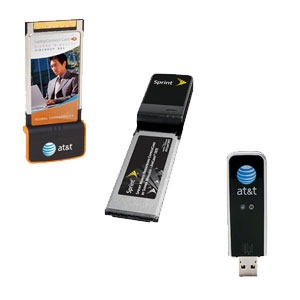


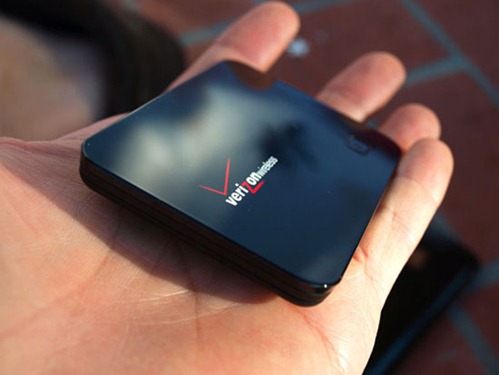
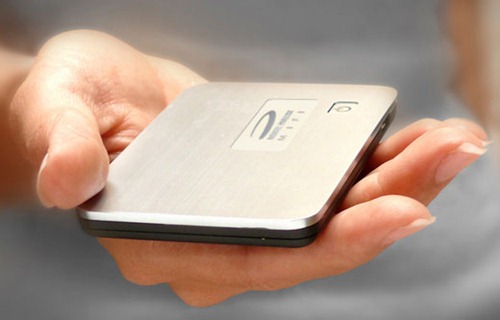

![broadband-card-types[4] broadband-card-types[4]](wp-content/uploads/2010/12/broadband-card-types4_thumb.jpg)
![verizon-mifi-7[4] verizon-mifi-7[4]](wp-content/uploads/2010/12/verizon-mifi-74_thumb.jpg)
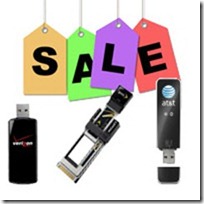
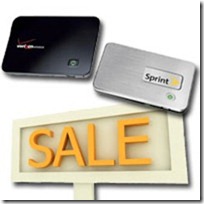



joanne moore says:
Thank you !!!!!!!
Thank you !!!!!!!
Thank you !!!!!!!
Marc says:
You’re welcome
You’re welcome
You’re welcome!
Lol